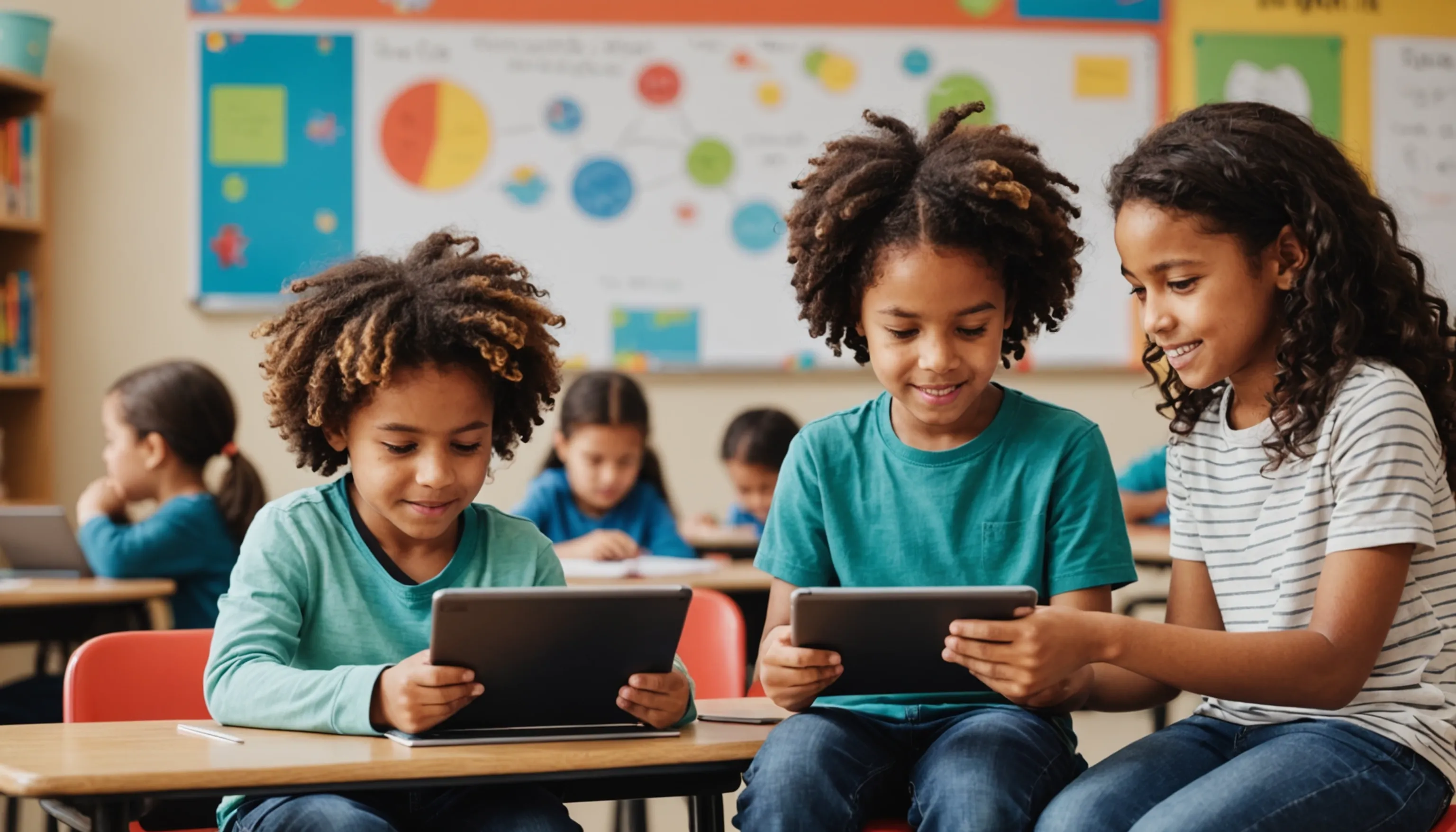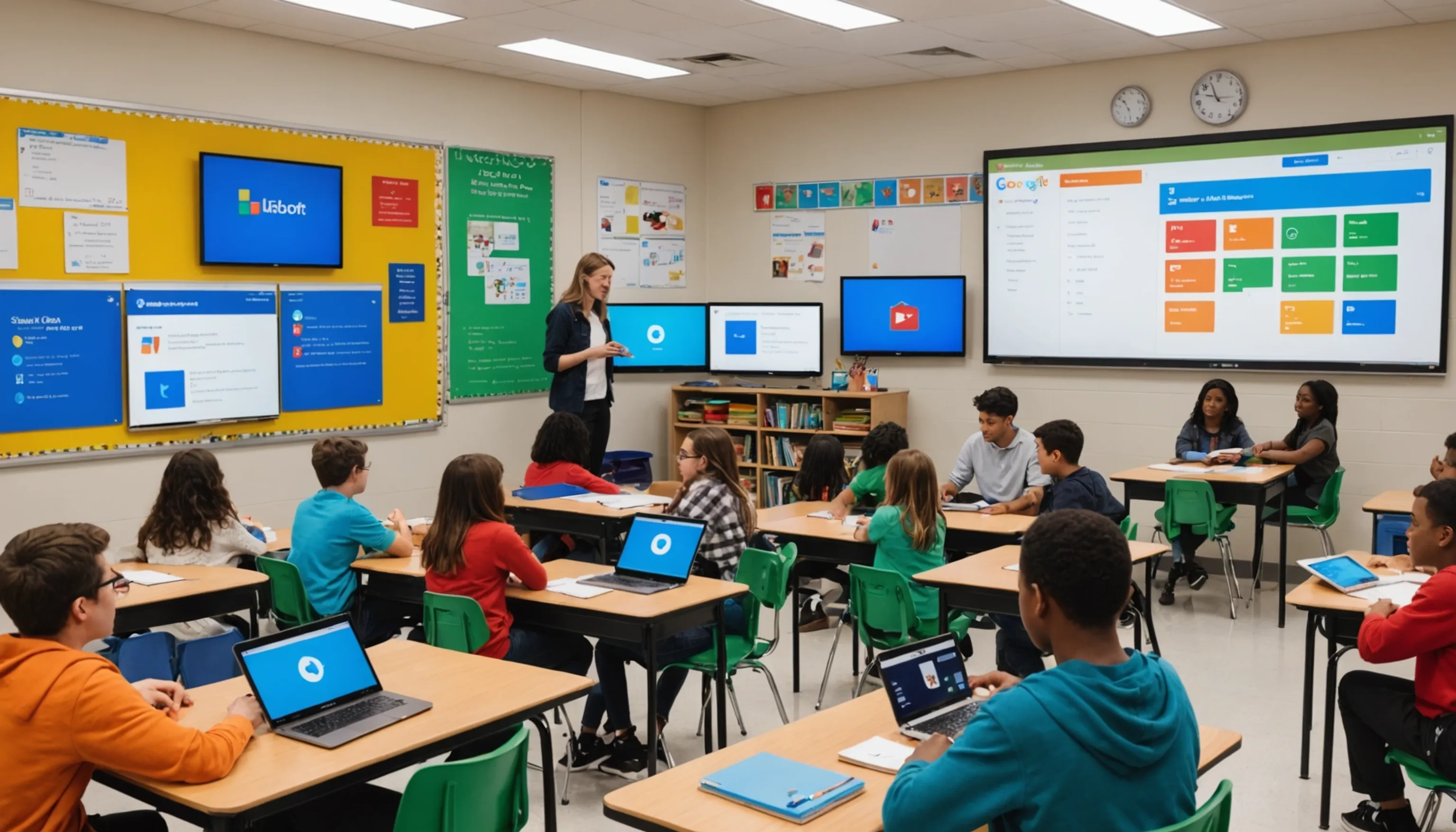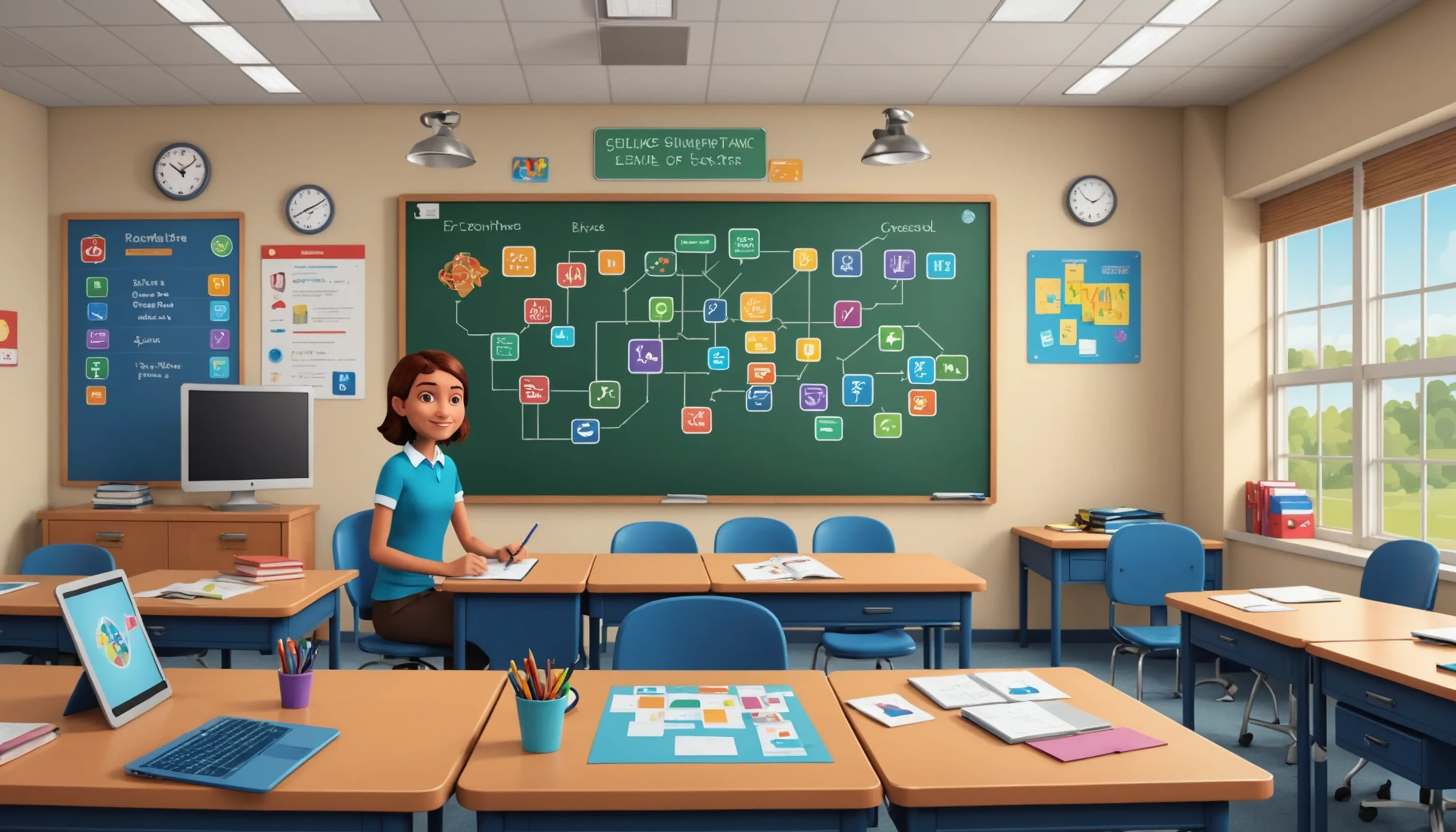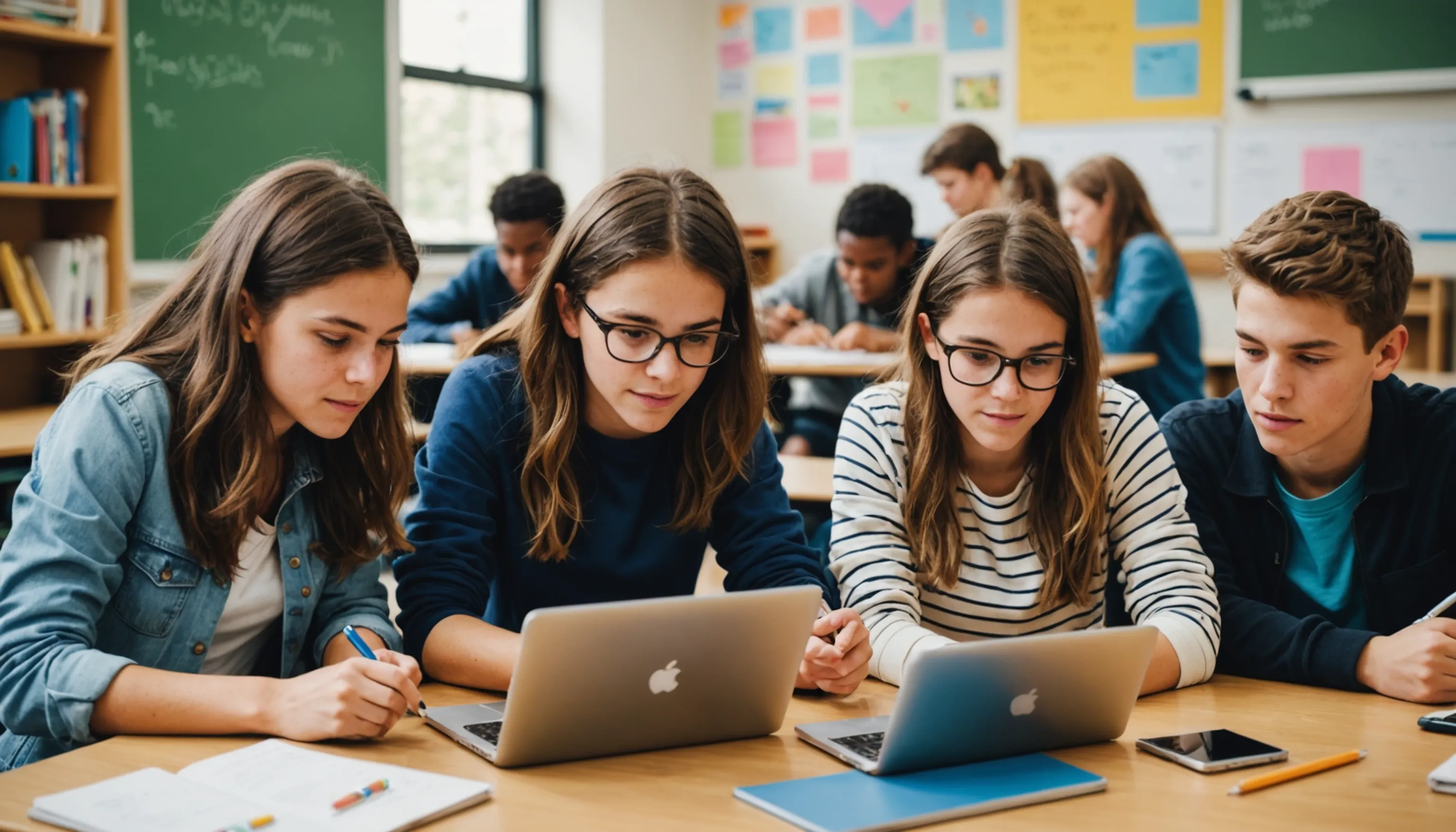How EdTech Enhances Kids' Education
 HvWHenry van Wagenberg
HvWHenry van Wagenberg
How EdTech Enhances Kids' Education
EdTech, or educational technology, plays a crucial role in enhancing kids' education by integrating digital tools into the learning process. This approach not only makes learning more engaging but also caters to various learning styles. With EdTech, students can access a wealth of resources, including interactive platforms and multimedia content that enrich their understanding of subjects.
Furthermore, technology encourages collaboration among students through virtual classrooms and online discussion forums. As a result, learners become more autonomous and motivated, leading to improved academic performance and preparation for the digital world.
The Role of Technology in Modern Education
Technology plays a pivotal role in modern education, transforming the way students learn and interact with information. The integration of technology into the classroom not only enhances the learning experience but also prepares students for a tech-driven future. One of the most significant contributions of technology is the access to a vast array of resources and information at students' fingertips. With the internet, learners can explore topics beyond the traditional curriculum, fostering a sense of curiosity and self-directed learning.
Moreover, technology enables personalized learning experiences. Adaptive learning software can assess a student's strengths and weaknesses, offering tailored resources that suit their individual learning pace. This customization is particularly beneficial for teenagers, who often have diverse learning needs and preferences.
In addition to personalized learning, technology promotes collaboration. Tools such as online discussion boards, video conferencing, and collaborative platforms allow students to work together, regardless of geographical barriers. This interaction not only builds teamwork skills but also exposes students to different perspectives.
Furthermore, technology supports educators by streamlining administrative tasks, allowing teachers to focus more on instruction and student engagement. Learning Management Systems (LMS) facilitate course management, grading, and communication with students and parents. Overall, the role of technology in modern education is crucial for creating a more engaging, inclusive, and efficient learning environment that equips students for future challenges.
Benefits of EdTech for Teenagers
EdTech offers numerous benefits for teenagers, significantly enhancing their educational experience. One of the primary advantages is the increased engagement that technology brings to the learning process. Interactive tools, such as educational games and multimedia presentations, capture students' attention and encourage active participation. This level of engagement is essential for teenagers, who often struggle to maintain focus during traditional lectures.
Another key benefit is the promotion of self-directed learning. With access to a wealth of online resources, teenagers can explore subjects at their own pace. This autonomy fosters a sense of responsibility and encourages them to take charge of their education. Additionally, many EdTech tools incorporate personalized learning features, adapting content to meet individual needs. This approach is particularly effective for accommodating diverse learning styles, ensuring that each student can succeed.
Collaboration is also enhanced through EdTech. Online platforms enable teenagers to work together on projects, regardless of their physical location. This collaboration not only builds teamwork skills but also prepares them for future workplaces, where remote collaboration is increasingly common.
Furthermore, EdTech equips teenagers with essential digital literacy skills. As technology continues to evolve, being proficient in digital tools is vital for academic and career success. By integrating EdTech into their education, teenagers not only improve their academic performance but also develop skills that will serve them well in the future. Overall, the benefits of EdTech for teenagers are profound, creating an engaging and effective learning environment.

Examples of Effective EdTech Tools
There are numerous effective EdTech tools that enhance the learning experience for students. For instance, Kahoot! is a popular platform that gamifies quizzes, making learning fun and interactive. Google Classroom streamlines communication between teachers and students, allowing for easy assignment distribution and feedback. Quizlet offers flashcards and study games, helping students to reinforce their understanding of key concepts. Another notable tool is Edmodo, which fosters collaboration and communication in a secure environment. Lastly, Duolingo provides a gamified approach to language learning, making it engaging for teenagers.
Learning Management Systems (LMS)
Learning Management Systems (LMS) are powerful tools that play a critical role in modern education, particularly in the context of EdTech. An LMS is a software application that enables educators to create, manage, and deliver online courses efficiently. One of the primary benefits of an LMS is its ability to centralize all course materials in one accessible location. This organization simplifies the learning process for students, who can easily find resources, assignments, and feedback.
Moreover, LMS platforms often feature robust assessment tools that allow educators to create quizzes and assignments, track student progress, and provide timely feedback. This data-driven approach helps instructors identify areas where students may be struggling, enabling timely interventions and support.
Another significant advantage of using an LMS is the facilitation of communication between teachers and students. Most systems include discussion boards, messaging features, and announcements, fostering an interactive learning environment. This connectivity is particularly beneficial for teenagers, who thrive on collaboration and peer interaction.
Additionally, many LMS platforms offer mobile compatibility, allowing students to access their courses anytime, anywhere. This flexibility accommodates diverse learning schedules and preferences, making education more accessible. Some popular LMS options include Canvas, Moodle, and Blackboard, each providing unique features to enhance the learning experience. Overall, LMS platforms are essential in modern education, streamlining course delivery and improving student engagement.
Interactive Learning Platforms
Interactive learning platforms are transforming the educational landscape by providing engaging and immersive experiences for students. These platforms leverage technology to facilitate active participation, encouraging learners to interact with content rather than passively consume it. One notable example is Nearpod, which allows teachers to create interactive lessons that include quizzes, polls, and multimedia elements, making the learning process dynamic and engaging.
Another popular interactive platform is Edpuzzle, which enables educators to enhance video lessons by adding questions and notes. This approach encourages students to actively engage with the material, ensuring they understand key concepts before moving on. Similarly, Flipgrid fosters student collaboration through video discussions, allowing learners to express their thoughts and ideas in a creative format.
Interactive learning platforms also support personalized learning experiences. Many of these tools adapt to individual student needs, providing tailored resources and feedback based on performance. For instance, platforms like Kahoot! and Socrative allow teachers to create quizzes that can assess understanding in real-time, enabling immediate adjustments to instruction.
Furthermore, these platforms often promote collaboration among students. Features like group projects and peer reviews encourage teamwork, which is essential for developing communication skills. Overall, interactive learning platforms play a crucial role in modern education, enhancing engagement, promoting collaboration, and supporting personalized learning, making them invaluable tools for teachers and students alike.

Gamification in Education
Gamification in education involves integrating game-like elements into the learning process to enhance student engagement and motivation. This approach can transform traditional lessons into interactive experiences. Key components of gamification include:
- Points and Rewards: Students earn points for completing tasks, encouraging competition.
- Badges: Visual representations of achievements that motivate learners to reach specific milestones.
- Leaderboards: Displays student progress and fosters a sense of competition among peers.
- Challenges and Levels: Structured learning paths that allow students to progress at their own pace.
Overall, gamification makes learning more enjoyable and effective.
How Gamification Motivates Students
Gamification motivates students by integrating game-like elements into the educational process, creating a more engaging and interactive learning environment. One of the primary ways gamification fosters motivation is through the use of rewards. When students earn points, badges, or other incentives for completing tasks, they experience a sense of accomplishment. This positive reinforcement encourages them to stay committed to their learning goals.
Additionally, gamification introduces an element of competition. Leaderboards display student progress, prompting a friendly rivalry among peers. This competition can drive students to put in more effort, as they strive to improve their rankings and earn recognition from their classmates and teachers.
Moreover, gamification often incorporates storytelling and immersive scenarios that enhance the learning experience. When students see themselves as characters in a narrative, they become more invested in the material. This emotional connection can lead to increased engagement and a deeper understanding of the subject matter.
Furthermore, gamified learning experiences typically allow for personalization. Students can choose their paths, select challenges that match their interests, and progress at their own pace. This autonomy fosters ownership of their learning journey, making them more motivated to succeed.
In summary, gamification effectively motivates students by combining rewards, competition, storytelling, and personalization, creating a dynamic and engaging educational experience that encourages active participation and a love for learning.
Real-World Applications of EdTech
EdTech has numerous real-world applications that significantly enhance the learning experience across various educational settings. One prominent example is the use of virtual classrooms. Platforms like Zoom and Microsoft Teams enable teachers to conduct live classes, allowing students to participate from anywhere in the world. This flexibility has been particularly valuable during events like the COVID-19 pandemic, ensuring that education continues uninterrupted.
Another application is the use of adaptive learning technologies. Tools such as DreamBox and IXL assess student performance in real time and adjust the difficulty of tasks accordingly. This personalized approach caters to individual learning paces, ensuring that students receive the support they need to succeed.
Online assessment tools like Google Forms and Kahoot! provide educators with efficient ways to evaluate student understanding. These tools facilitate immediate feedback, allowing teachers to identify areas where students may struggle and adjust their instruction accordingly.
Additionally, educational apps have become increasingly popular. Apps like Duolingo and Photomath offer students engaging ways to learn languages and solve math problems, respectively. These platforms encourage independent learning and provide resources that students can access at their convenience.
Lastly, collaborative tools such as Padlet and Google Docs enable students to work together on projects, enhancing their teamwork and communication skills. Overall, the real-world applications of EdTech are diverse and impactful, transforming the educational landscape for both students and teachers.
Challenges of Implementing EdTech
Implementing EdTech in educational settings presents several challenges. One significant hurdle is the cost associated with acquiring technology and training staff. Many institutions may struggle to allocate sufficient funds for these investments. Additionally, there can be a steep learning curve for educators who are not tech-savvy, requiring time and resources for effective training.
Moreover, access issues can arise, particularly in underserved areas where students may lack reliable internet or devices. Finally, resistance to change from both educators and students can hinder the successful integration of technology into the curriculum.
Potential Distractions from Technology
While technology offers numerous benefits in education, it also presents potential distractions that can hinder student learning. One of the most significant distractions is the accessibility of social media. Platforms like Instagram, Snapchat, and TikTok can easily divert students' attention away from academic tasks. As they become engrossed in scrolling through feeds or chatting with friends, valuable learning time can be lost.
Another concern is the prevalence of multitasking. Students often attempt to engage with multiple sources of information simultaneously, such as listening to music while studying or chatting with peers during online classes. This multitasking can lead to decreased focus and retention of information, negatively impacting their academic performance.
Moreover, the design of many educational apps and websites incorporates game-like elements that can be engaging but may also lead students to spend excessive time on non-educational activities. For instance, while platforms like Kahoot! are effective for learning, students may become more focused on competition rather than mastering the content.
Additionally, information overload can occur when students are inundated with vast amounts of data and resources available online. This overload can create confusion and overwhelm, making it difficult for them to discern which information is relevant and useful.
Finally, the lack of self-regulation in managing technology use can lead to procrastination and a decrease in productivity. To mitigate these distractions, educators and parents must foster a balanced approach to technology use, teaching students to prioritize their learning while utilizing the benefits of digital tools.
The Digital Divide and Access Issues
The digital divide refers to the gap between those who have easy access to digital technology and the internet and those who do not. This divide poses significant challenges in education, particularly as educational technology (EdTech) becomes increasingly integrated into learning environments. One of the primary access issues is the lack of reliable internet connectivity in rural and low-income areas. Students without consistent access to the internet are at a disadvantage, as they cannot fully engage with online resources, participate in virtual classrooms, or complete assignments that require digital tools.
Moreover, the availability of devices is another critical factor. Many students may lack personal computers or tablets needed for accessing educational content. Schools often try to bridge this gap by providing devices, but insufficient funding and logistical challenges can hinder these efforts.
The digital divide also affects students' ability to develop essential digital literacy skills. In a world that increasingly relies on technology, students who are not exposed to digital tools may struggle to keep pace with their peers in higher education or the workforce. This lack of preparedness can perpetuate cycles of inequality.
Furthermore, the pandemic highlighted these access issues, as remote learning became the norm. Many students were left behind, unable to participate in online education due to a lack of resources. To address the digital divide, it is crucial for policymakers, educators, and communities to collaborate on solutions that provide equitable access to technology and the internet, ensuring all students have the opportunity to succeed in a digital age.
